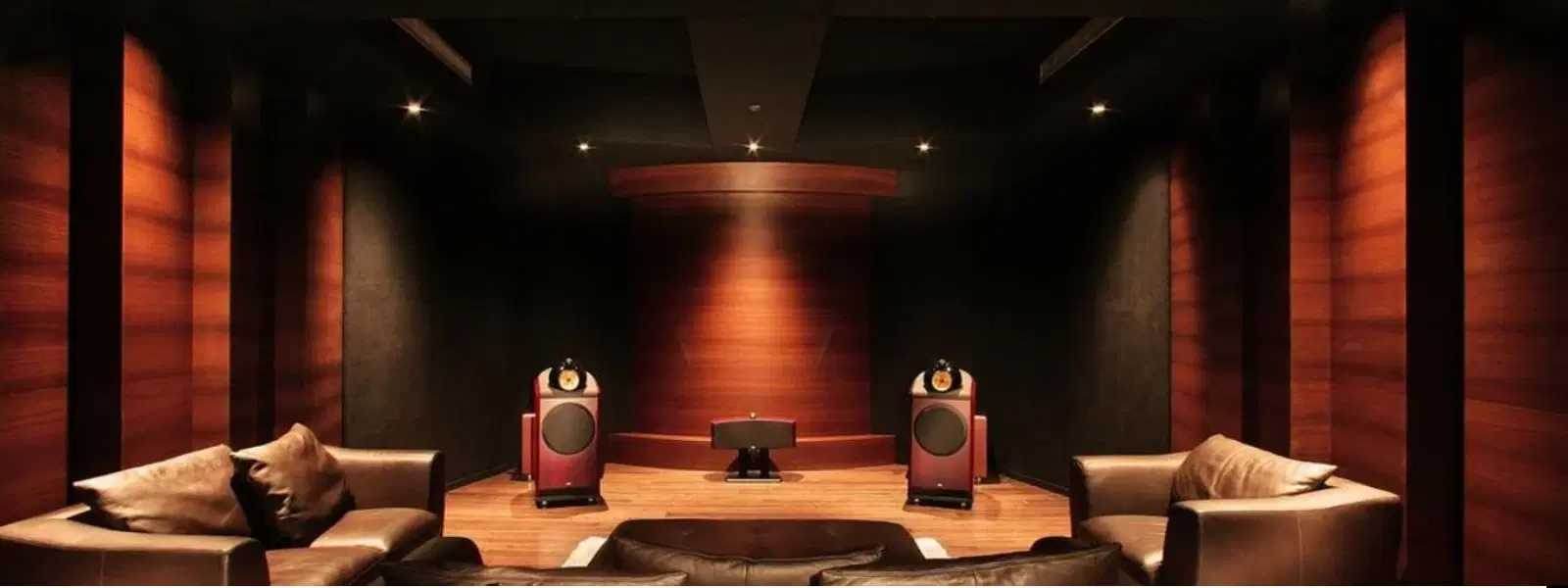
Home Appliances
•04 min read

Buy SAMSUNG Q Series 400W Soundbar with Remote (Dolby Atmos, 5.1.2 Channel, Black) online at best prices from Croma. Check product details, reviews & more. Shop now!
Imagine transforming your living room into a cinematic experience with crystal-clear sound that rivals the best theaters. By understanding and optimising your space for an acoustic home theater, you can create a true audio haven, enjoying every whisper of dialogue and resonant deep bass. In this guide, you'll learn everything from the basics of acoustics in a home theater to expert speaker placement tips, ensuring you get the best home theater sound system possible.
Acoustics refers to how sound travels and interacts within a space. In an acoustic home theater, every surface and corner affects the clarity and quality of sound. Room acoustics influence how well each note and effect is delivered, meaning that even the best home theater speakers can underperform if the room isn’t properly treated. By paying close attention to these details, you will be rewarded with a high-quality audio system that mirrors a live performance.
Acoustic sound optimization plays a crucial role in eliminating common audio challenges such as echo and sound distortion. Improved dialogue clarity, balanced sound distribution, and a reduction in ambient noise all lead to a more immersive and enjoyable experience. This focus on refinement allows for a surround sound setup that can transform not just movie nights, but everyday listening experiences as well.
For any audio system for home, especially an acoustic home theater, proper speaker placement is essential. Speakers should be positioned to ensure that sound reaches the listening area evenly. The general rules of thumb include maintaining an optimal distance between speakers and seating areas, and setting the correct angles to create a balanced surround sound setup. This meticulous approach ensures more precise sound delivery and a cohesive audio output across your space.
Home Theater Subwoofer: Placing your subwoofer in a corner or along a wall can enhance bass response, enabling deep, controlled low frequencies. Experiment with positioning to achieve optimum results for a rich, full-bodied sound.
Wireless Home Theater Speakers: Although these speakers offer great flexibility, it’s important to avoid potential interference by keeping them in a clear line of sight and away from other electronics. Their cable-free design makes it easy to experiment with different placements until you achieve your desired high-quality audio system performance.
Center Channel Speaker: This speaker is crucial for delivering dialogue. Position it directly above or below your television and angle it towards the seating area to provide clear and focused sound that brings conversations to life.

Buy Croma 0.75 Ton 3 Star Window AC (Copper Condenser, Dust Filter) online at best prices from Croma. Check product details, reviews & more. Shop now!
To accomplish acoustic sound optimization, consider integrating various acoustic treatments like panels, bass traps, and ceiling diffusers. Acoustic panels effectively minimise echo, while bass traps stabilize low frequency resonances, smoothing out the audio. For those looking to experiment with DIY home theater wall panels, there are plenty of creative and cost-effective solutions to enhance room acoustics for home theater.
Improving room acoustics isn’t a one-size-fits-all process. Start by assessing your room using available tools such as smartphone apps or specialised sound level meters. Place these devices in different seating areas to understand the acoustic challenges unique to your space. Once you identify these issues, strategically place your treatments on walls and ceilings to reduce echo and enhance sound clarity. Even small changes can significantly improve the performance of your surround sound setup.
Pro Tip from Tata Neu: Small adjustments in speaker angles, such as directing the front speakers towards the listening area, can dramatically improve sound clarity. Test different configurations to find the perfect balance for your room’s acoustics.
Many enthusiasts make the mistake of neglecting the precision required in speaker placement. Even slight misalignments can result in sound that is either too focused or too dispersed, ultimately detracting from the immersive experience. Remember, the placement of home theater speakers is as important as their quality.
The dimensions and layout of your room play a significant role in the overall sound quality. Furniture, wall positions, and even door placements can impact acoustics. Allocating time to understand how these elements interact with your audio system ensures that the sound distribution remains balanced.
While acoustic panels are extremely beneficial, overuse can lead to an over-dampened environment. It is important to strike a balance; too many panels can make the room sound lifeless by absorbing too much sound and dulling the audio experience. Aim for a harmonious mix of treatments that enhances clarity while preserving the room's natural ambience.

Buy SONY SA-D40M2 100W Multimedia Speaker (Dolby Audio, 4.1 Channel, Black) online at best prices from Croma. Check product details, reviews & more. Shop now!
Yes, acoustic panels help reduce echo and improve sound clarity, making them an important addition to any acoustic home theater setup.
The best treatment depends on your room's specific needs, but bass traps, wall panels, and ceiling diffusers are commonly used to balance sound and reduce distortion in a high-quality audio system.
Some disadvantages include potential aesthetic concerns, over-dampening of sound, and the initial investment required for high-quality panels.
Acoustics refers to the study of sound propagation and interaction within a space, which significantly impacts the overall audio experience in your home theater.
Place acoustic panels on walls and ceilings where sound reflections are most prominent to reduce echo and improve overall sound clarity.
Acoustic optimization and precise speaker placement are critical aspects of achieving an immersive audio experience in your home. By understanding the nuances of room acoustics and employing expert techniques for positioning your home theater speakers—be it your subwoofer, wireless units, or the center channel—you ensure that every sound is delivered with clarity and precision. With a balanced approach to acoustic treatments and a keen eye for detail, you can enjoy a truly transformative surround sound setup. Explore more about acoustic improvements and elevate your home entertainment experience with confidence.